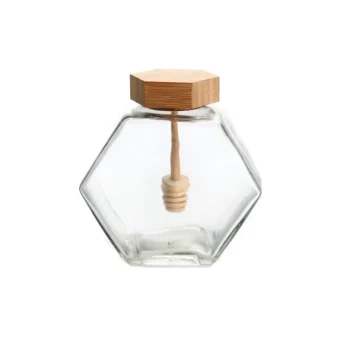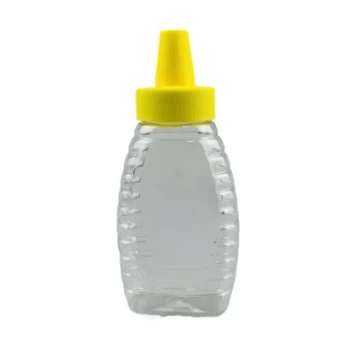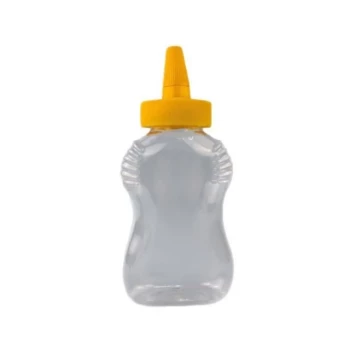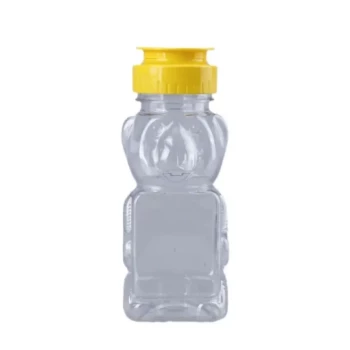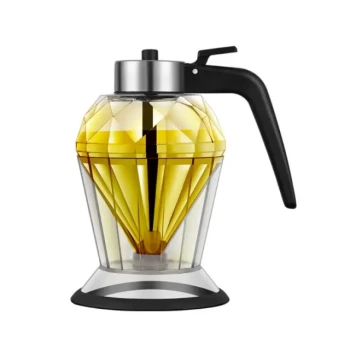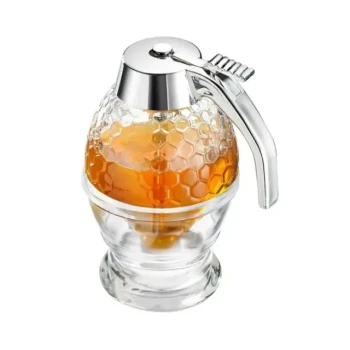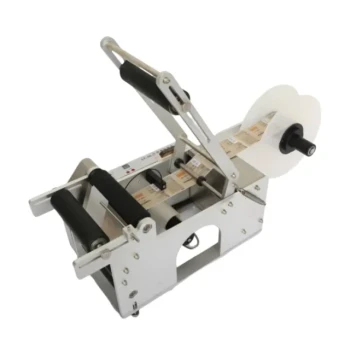For producers and distributors, the decision to use plastic containers for honey is a strategic choice driven by significant logistical and economic advantages. Producers choose plastic primarily because it is shatter-resistant, lightweight, and more cost-effective to manufacture and ship than glass, making it an ideal choice for safely reaching a broad market.
The choice between plastic and glass is not about one being universally "better," but about balancing priorities. Plastic excels in cost-efficiency and durability for transport, while glass remains the standard for long-term preservation and premium positioning.

The Practical Advantages of Plastic Packaging
The appeal of plastic containers for honey producers is rooted in clear, measurable business benefits that impact the entire supply chain, from the factory floor to the retail shelf.
Lower Shipping and Handling Costs
A key driver is weight. Plastic containers are substantially lighter than their glass counterparts, which directly translates to lower fuel consumption and reduced freight costs, especially when shipping in bulk.
This weight reduction also simplifies handling for workers at every stage, from packing and loading to stocking store shelves.
Superior Durability and Safety
Unlike glass, plastic is shatter-resistant. This dramatically reduces product loss due to breakage during transport and handling.
This durability also presents a significant safety advantage in retail environments and homes, minimizing the risk of injury from broken shards.
Manufacturing and Design Flexibility
Plastic is less expensive to produce than glass. Furthermore, it can be molded into a wide variety of shapes and sizes—from traditional jars to convenient, squeezable "bear" bottles—at a relatively low cost.
This versatility allows brands to create unique, user-friendly packaging that stands out and meets specific consumer needs, such as single-handed dispensing.
Ensuring Honey Quality in Plastic
While the logistical benefits are clear, responsible producers also use specific types of plastic to ensure the honey remains safe and well-preserved.
The Role of Food-Grade Plastics
Producers exclusively use food-grade plastics approved for contact with consumables. The most common type for clear honey jars is PET (polyethylene terephthalate), which is known for its clarity and protective barrier.
These plastics are chosen because they are stable and do not leach harmful substances into the honey. Many producers also explicitly market their containers as BPA-free to address consumer health concerns.
Sealing and Freshness
Modern plastic containers, often equipped with high-quality twist-off lids, provide a reliable airtight seal.
This seal is critical for protecting the honey from airborne moisture and contaminants, preserving its quality and preventing premature crystallization.
Understanding the Trade-offs
Despite its advantages, choosing plastic involves accepting certain compromises compared to glass, particularly concerning long-term storage and consumer perception.
Permeability and Shelf Life
Plastic is inherently more permeable than glass. While the effect is minimal for typical consumption timelines, over very long periods (years), a plastic container may allow for minuscule amounts of moisture exchange or absorption of external odors from the storage environment.
Potential for Flavor Alteration
For the most discerning palates, there is a small but recognized risk that honey stored in plastic for an extended duration might experience a subtle alteration in its flavor profile. This is a primary reason why honey connoisseurs and purists often prefer glass for cellaring or long-term keeping.
Consumer Perception and Branding
Glass is often perceived by consumers as a more premium, natural, and sustainable packaging material. For artisanal or high-end honey producers, a glass jar can signal superior quality and justify a higher price point. Plastic, conversely, is typically associated with value and convenience.
Making the Right Choice for Your Goal
The optimal container depends entirely on the producer's primary objective.
- If your primary focus is cost-efficiency and wide distribution: Plastic is the undisputed choice for its low manufacturing and shipping costs and its superior durability.
- If your primary focus is premium branding and maximum shelf life: Glass is the superior option for its impermeability and its perception as a high-quality material.
- If your primary focus is consumer convenience: Specialized plastic containers, like squeezable bottles, offer a level of user-friendliness that glass cannot match.
Ultimately, selecting the right packaging is a deliberate decision that aligns the physical properties of the container with the brand's goals and market strategy.
Summary Table:
| Feature | Plastic Container | Glass Container |
|---|---|---|
| Durability | Shatter-resistant, safer for transport | Fragile, high risk of breakage |
| Weight & Shipping Cost | Lightweight, significantly lower freight costs | Heavy, higher shipping expenses |
| Manufacturing Cost | Lower production cost, versatile shapes | Higher production cost |
| Shelf Life (Long-Term) | Good, but slightly permeable over many years | Excellent, impermeable for maximum preservation |
| Consumer Perception | Value, convenience | Premium, artisanal quality |
Ready to optimize your honey packaging and supply chain?
As a leading wholesale supplier to commercial apiaries and distributors, HONESTBEE provides the durable, cost-effective plastic containers and beekeeping equipment you need to scale your operations safely and efficiently. Our solutions are designed to reduce your breakage rates and shipping costs, directly impacting your bottom line.
Contact our packaging experts today to discuss bulk pricing and find the perfect containers for your brand and market.
Visual Guide
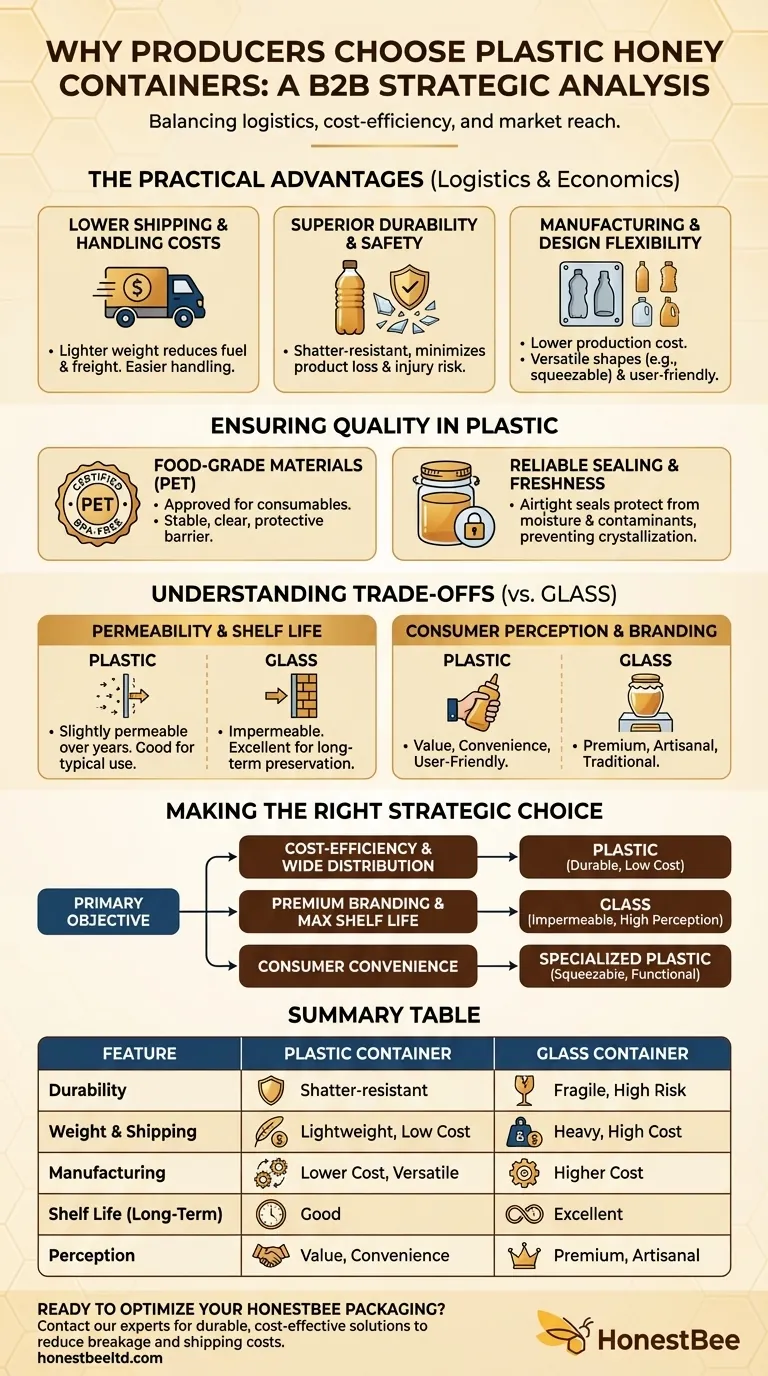
Related Products
- Food Grade Plastic Honey Bucket Pail for Beekeeping
- Hexagonal Glass Honey Jar with Wooden Lid Integrated Dipper Elegant Functional Storage
- Classic Beehive Honey Bottle Jar with Squeeze Dispenser Lid
- Ergonomic Squeezable Honey Bottle with Precision Twist Nozzle Cap
- Classic Honey Bear Jars with Flip Top Dispensing Cap for Liquid Sweeteners
People Also Ask
- What are the benefits of honey pouches? A Guide to Cost-Effective & Convenient Packaging
- Can you store honey in a plastic bucket? Yes, with the right food-grade HDPE.
- How heavy is a 5 gallon bucket of honey? A Beekeeper's Guide to Handling & Measuring
- How long can you store honey in a 5 gallon bucket? Preserve Quality & Safety for Decades
- What are plastic buckets called? The Essential Guide to Plastic Pails

